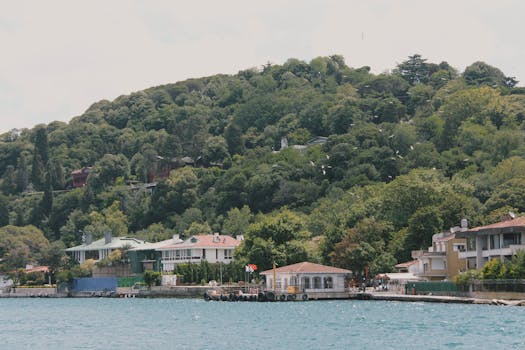Flood-Proof Architecture: Protecting Coastal Communities
Located along the coasts, many communities are at risk of being impacted by flooding due to strong storms, hurricanes, and sea-level rise. In recent years, the frequency and severity of these disasters have increased, putting coastal communities in danger and causing costly damages. In order to protect these communities from the devastating effects of flooding, architects have begun incorporating flood-proof designs into their projects. Flood-proof architecture is a crucial element in mitigating the impact of flooding and safeguarding coastal communities.
The Importance of Flood-Proof Architecture
Flood-proof architecture, also known as flood-resistant design, refers to the incorporation of structural and non-structural features into a building to prevent or limit the damage caused by flooding. These features are designed to withstand high water levels, strong winds, and other impacts of extreme weather events. The goal of flood-proof architecture is to minimize property damage, ensure the safety of occupants, and reduce the cost of recovery and rebuilding following a flood.
The Impact of Flooding on Coastal Communities
Coastal communities are particularly vulnerable to flooding due to their proximity to the ocean and low-lying topography. According to the National Oceanic and Atmospheric Administration (NOAA), almost 40% of the U.S. population lives in counties that sit along the coast. These communities are at risk of experiencing both storm surge and sea-level rise, which can lead to extensive damage to properties and infrastructure.
Flooding can also have a significant impact on the economy of coastal communities. It can disrupt transportation systems, damage businesses, and force residents to evacuate, causing a decline in tourism and other economic activities. In addition, the cost of recovery and rebuilding after a flood can be astronomical, putting a strain on the local economy and government resources.
How Flood-Proof Architecture Protects Coastal Communities
Flood-proof architecture incorporates various design elements to mitigate the risk of flooding and reduce the potential for damage. Some of these features include elevating buildings above flood level, using flood-resistant materials, and designing buildings to allow floodwaters to flow through without causing structural damage.
Elevating buildings is commonly used in flood-prone areas to prevent floodwaters from entering the structure. This can be achieved by raising the building on stilts or using a raised foundation. Another approach is to construct breakaway walls or barriers that can withstand the force of high water, diverting it away from the building.
In addition to structural features, non-structural elements such as temporary flood barriers and flood-proof doors and windows can also be incorporated into the design. These features act as a first line of defense, preventing water from entering the building and causing damage.
Examples of Flood-Proof Architecture
In recent years, there has been a growing interest in flood-proof architecture, particularly in coastal communities. One notable example is the Seabrook Island Clubhouse in South Carolina. The clubhouse was designed to withstand hurricane-force winds and high water levels, with elevated foundations, watertight doors and windows, and reinforced walls and roof.
Another example is the Living Breakwaters project in Tottenville, New York. The project aims to protect the community from the impacts of storm surge and sea-level rise by constructing a series of breakwaters and oyster reefs along the coastline. These structures absorb the energy of incoming waves, reducing the impact on the shore and providing a habitat for marine life.
The Future of Flood-Proof Architecture
Flood-proof architecture is not only limited to protecting coastal communities. As the frequency of extreme weather events increases, flood-proof design is being integrated into projects in various locations, including urban and suburban areas. This shows the growing recognition of the importance of flood-proof architecture in mitigating the effects of climate change.
A proactive approach to flood-proof architecture is crucial in creating resilient communities. As more architects incorporate flood-proof design into their projects, it will become a standard practice in the construction industry. Through innovation and collaboration, we can build stronger, safer, and more sustainable communities that are better equipped to face the challenges of the future.
Conclusion
In conclusion, flood-proof architecture plays a vital role in protecting coastal communities from the devastating impacts of flooding. By incorporating resilient design elements, we can minimize the damage caused by extreme weather events and create more resilient communities. As the effects of climate change continue to worsen, it is essential to prioritize flood-proof architecture in all new construction projects to safeguard our coastal communities for future generations.







